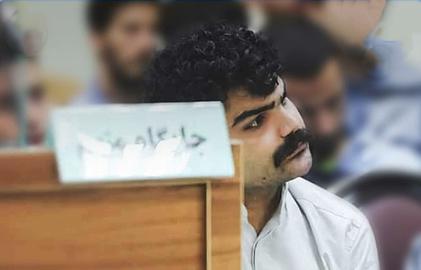When student supporters of Ayatollah Ruhollah Khomeini took US Embassy staff hostage in Tehran on November 4, 1979, they created a diplomatic earthquake that reverberated through the lives of all Iranians. One of them was Iraj Abedian, a young economist who was planning to leave for postgraduate studies at Stanford University in California that year. With the hostage situation escalating into a full-blown international crisis, traveling to the US suddenly looked unwise. At first, he planned to switch to the London School of Economics, but then a friend suggested the University of Cape Town in South Africa. “I said, ‘From the frying pan to the fire!’” Abedian says. “But I gave it some thought.”
At the time, South Africa was still under apartheid, a system of white-dominated racial segregation established by the country’s National Party in 1948. And whereas the South African government had enjoyed good relations with Mohammad Reza Pahlavi, the former Shah of Iran, Khomeini’s new regime had cut ties with South Africa in favor of the African National Congress, the country’s most prominent national liberation movement. Yet for all the political considerations involved, Abedian’s family, members of Iran’s Baha’i religious minority, encouraged him to go. “At that time, the international Baha'i community was encouraging young Baha'is to go to South Africa and promote racial unity because one of the central tenets of the Baha'i faith is the unification of humankind, and particularly the elimination of racial prejudice,” he says.
When Abedian arrived in Cape Town in 1980 to do his honors in economics, he saw that prejudice up close. “It was quite visible that the university was configured for the white students,” he says. While there were some African, Indian, and mixed-race “colored” students, their numbers were small, and they were not represented in professions like science and engineering. “The education at the tertiary level was pretty much segregated,” he says. “If you were black, you were not allowed to enroll in hard science courses. The founder of apartheid, Dr. Hendrik Verwoerd, had hypothesized that Africans were not able to, and did not need to, engage in scientific courses. The political and state machinery were pretty much configured to give expression to those hypotheses.”
While South African universities were largely divided into “white” institutions that that offered a full range of courses and “black” institutions that tended to focus on the humanities and technical skills, there was a degree of change underway. “When I landed in South Africa, there was a bit of loosening in the sense that, at the political level, they had split the country into what they called independent ‘homelands.’ They had ten of these ‘homelands’ that were supposedly the motherlands of the various African tribes. Some of these had become independent under the apartheid regime. If you came from one of those regions and you were good at your high school math and science, you could become an engineer or enroll in university science because you weren't technically South African.”
The University of Cape Town was one of the main centers of opposition to racial discrimination in education. “The University of Cape Town was broadly labeled ‘Moscow on the Hill’ to capture the relatively coherent and united opposition that the university had to the foundations of the apartheid regime,” Abedian says. But political opposition extended well beyond the university. Opponents of the education system were manifold. Intellectuals, some church organizations, and thousands of non-governmental organizations all challenged the system in their own way. Writers published critiques, civil society groups held rallies, and some organizations even held secret meetings with black students who were developing strategies for opposing education discrimination. “For me as a foreigner landing on this alien planet, it took a couple of years to learn how wide and deep and complex opposition to apartheid was, including in the education system.”
In the South African racial imagination, Iranians like Abedian were considered “Asian.” But because the government had had good ties with the Pahlavi monarchy ever since the Shah’s father, Reza Shah, lived in exile in Johannesburg from 1942-1944, there were occasional exceptions. “Some Iranians who were connected to the regime were classified as ‘honorary’ whites,” Abedian says. “Much like the Japanese, they were allowed access to certain places — for example, to travel in the first class sections of trains, which were exclusively for whites. By all rational measures it was completely convoluted and irrational, and yet the architects of apartheid not only said it was ‘common sense,’ but they had gone beyond that and found biblical support for their perverted ideology.”
Trouble Back Home
As Abedian sought to navigate the complexities of racial discrimination in apartheid South Africa, his own community, the Baha’is of Iran, faced ever-increasing religious discrimination. Whereas Khomeini and his revolutionary Islamist supporters accorded members of Iran’s Jewish, Christian, and Zoroastrian minorities subordinate but official minority status, they sought to root out the Baha’i faith – Iran’s largest religious minority – as an intolerable heresy.
Baha’i community leaders faced imprisonment and execution, while ordinary Baha’is were pushed out of public sector employment – which included educational work – and faced official harassment in all areas of public life. In 1991, at the request of Khomeini’s successor, Ayatollah Ali Khamenei, the Iranian government issued a secret memorandum detailing a plan to block the Baha’is’ educational and professional advancement by barring all members of the minority from post-secondary education.
While the scale of discrimination in Iran and South Africa was rather different – black Africans made up about 80 percent of South Africa’s population of 36 million people whereas Iranian Baha’is numbered in the hundreds of thousands – Abedian noticed stark similarities in the respective governments’ use of religious texts. “Both of them justified the very foundation of discrimination on religious grounds,” Abedian says. “The intellectual founders of apartheid had found biblical explanations and justifications for their discriminatory conduct, in exactly the same way that the Iranian regime later used Islamic scriptures to roll out discrimination.” Moreover, both states used the machinery of state to bar people from economic progress and prosperity.
There were other partial analogies to be drawn as well. In South Africa, opponents of apartheid had challenged education discrimination through a range of covert means. In the 1960s, he says, urban blacks formed “cultural clubs,” where qualified teachers and professors would conduct quality instruction in math, science, and other subjects. The government soon realized what was going on and cracked down, but other groups took up the cause. NGOs and private religious organizations ran their own educational initiatives, mostly at the high school level. Some groups ran educational camps for young black Africans in neighboring countries. In Iran, meanwhile, the Baha’is resisted religious discrimination by establishing the Baha’i Institute for Higher Education, or BIHE, a secret post-secondary education system run out of people’s homes.
Abedian, now a prominent economist in South Africa, says education discrimination did South Africa immense harm, from which it has yet to recover. “As a result of apartheid, the majority of the economically active population either does not have an education or does not have the skills that the economy needs, so the economy suffers heavily,” he says. While white South Africans may be relatively more prosperous than the rest of the population, he says, South Africa faces high crime and a lack of social harmony that limits the country’s prospects. “One thing white South Africans have realized is that, whereas they thought that they were just harming the blacks, they were harming themselves too. Many recognize that they could have been much richer if apartheid either failed earlier or had never existed.”
There, too, there are analogies to be drawn. While Iran’s Baha’is form only a small part of Iran’s population, he says, Iran is also harming itself in a lasting manner. “Discrimination is like cancer. Whether you release it to a small part of the body or to the entire body, it has a corrosive impact on social cohesion. From that point of view, Iran will take as long as South Africa to expunge the cancerous effects of discriminatory conduct, which affects every sphere of life. When the Iranian authorities wake up from this slumber of ignorance and some form of sense prevails, they will recognize that although they thought they were winning, they themselves were also the loser in this process.”
In 1992, Abedian predicted that the end of South Africa’s apartheid system was imminent and applied for South African citizenship. He received it in 1993. The following year, South Africa held its first multiracial election. After 1994, Abedian was extensively involved in economic and financial policy, as well as the institutional restructuring of South Africa’s public policy. He has taught at the universities of Cape Town and Pretoria.
visit the accountability section
In this section of Iran Wire, you can contact the officials and launch your campaign for various problems

























comments
Very true! It is simple as math: 1+2={{1+2}}